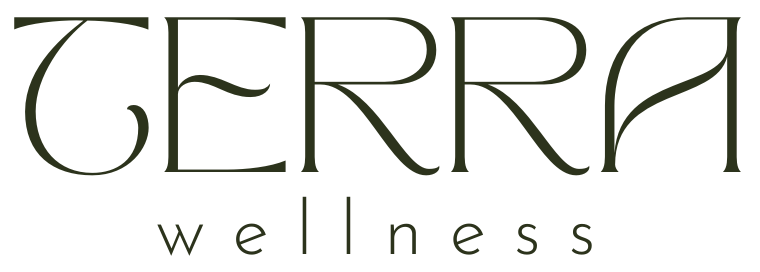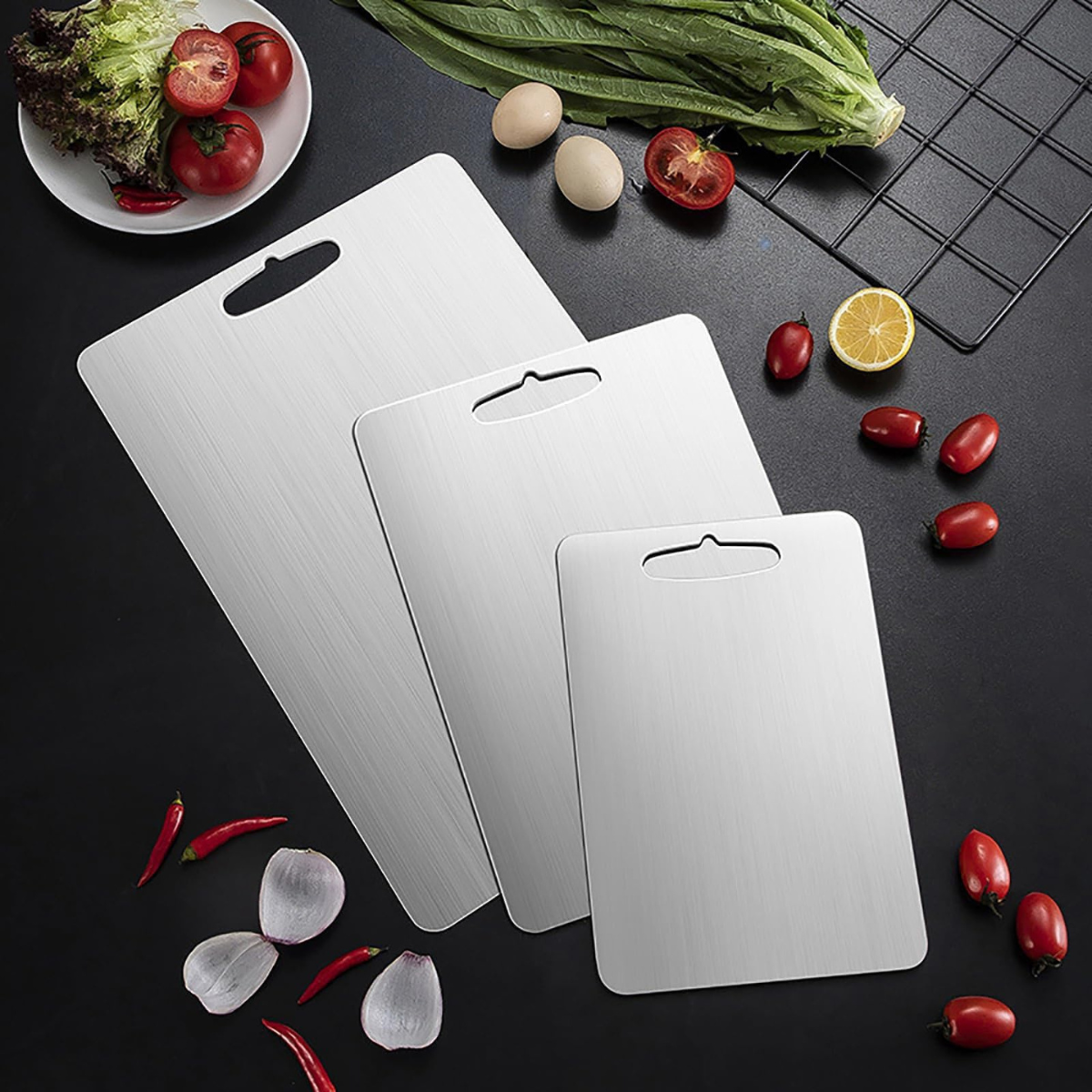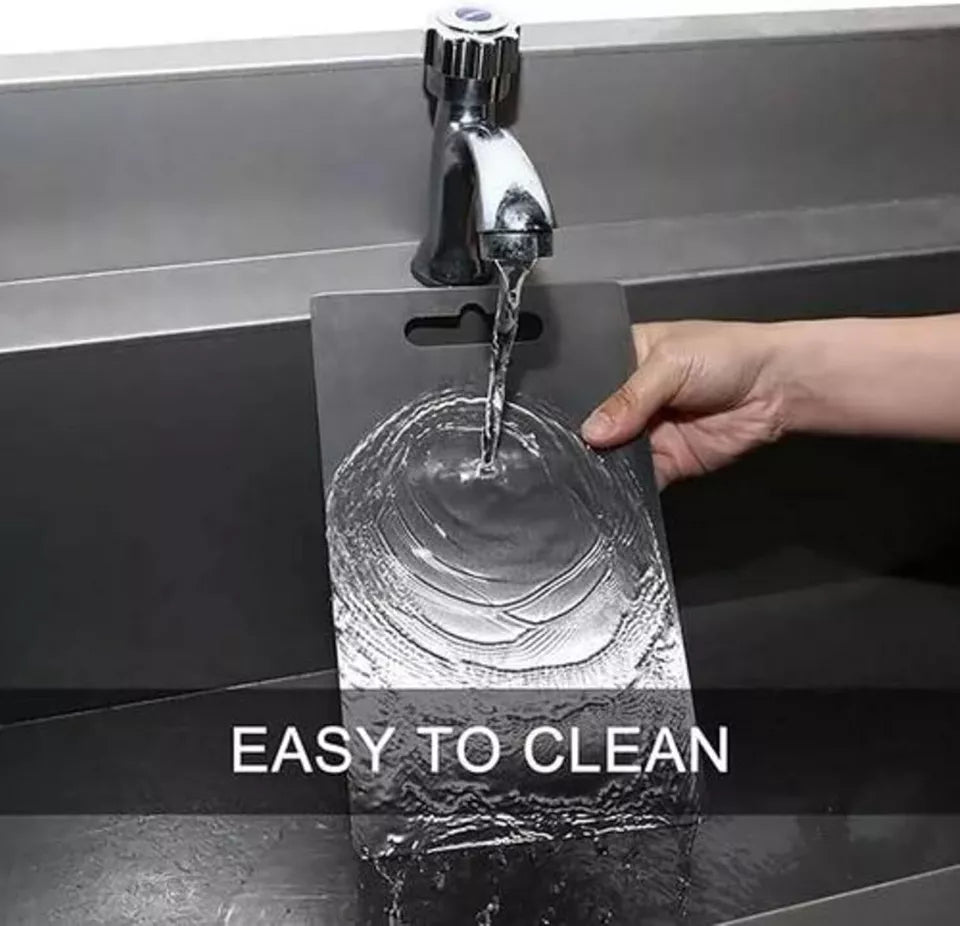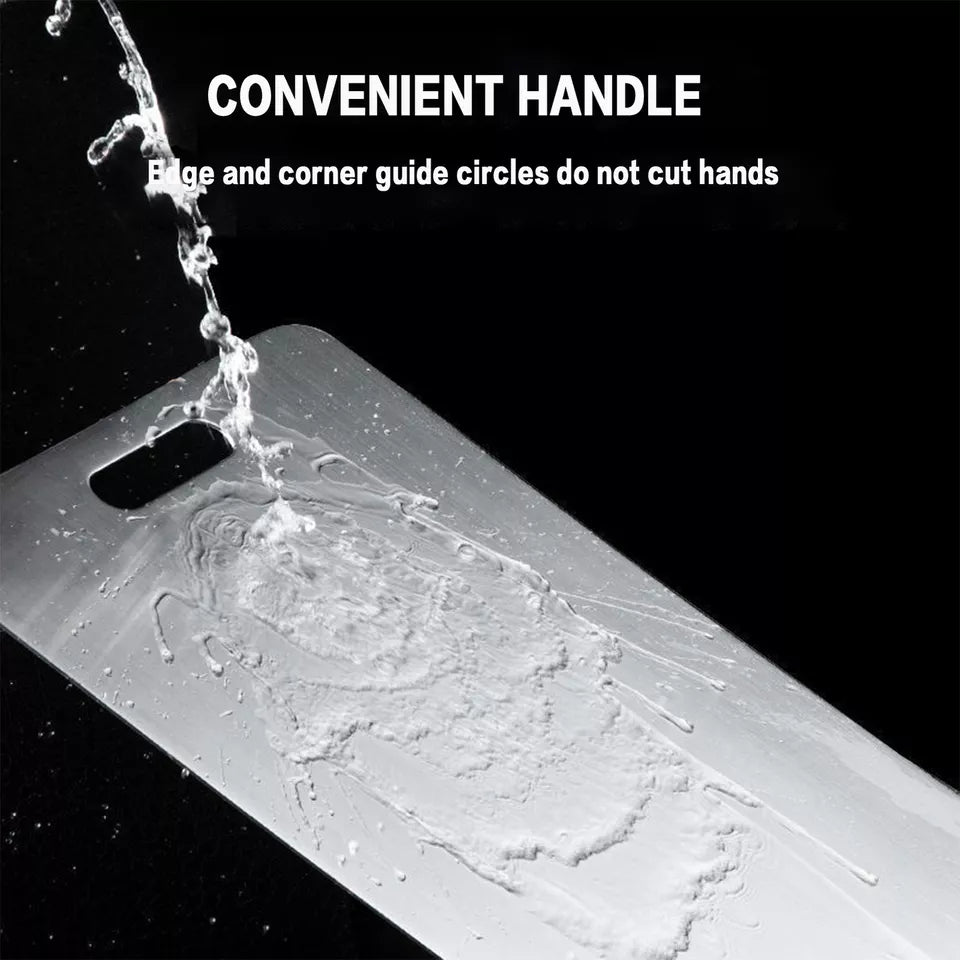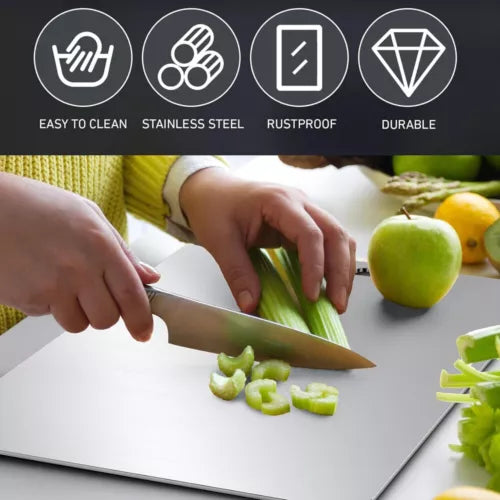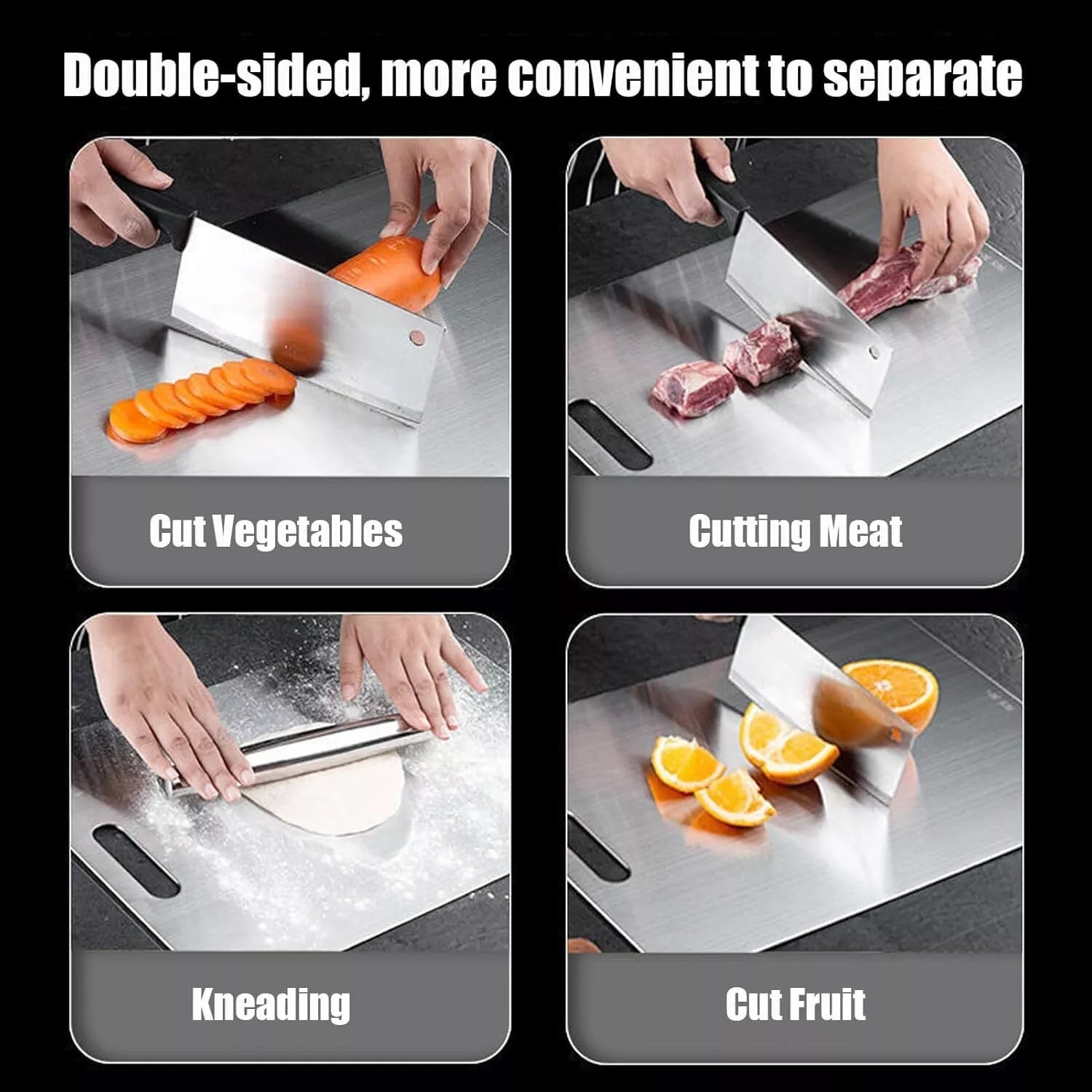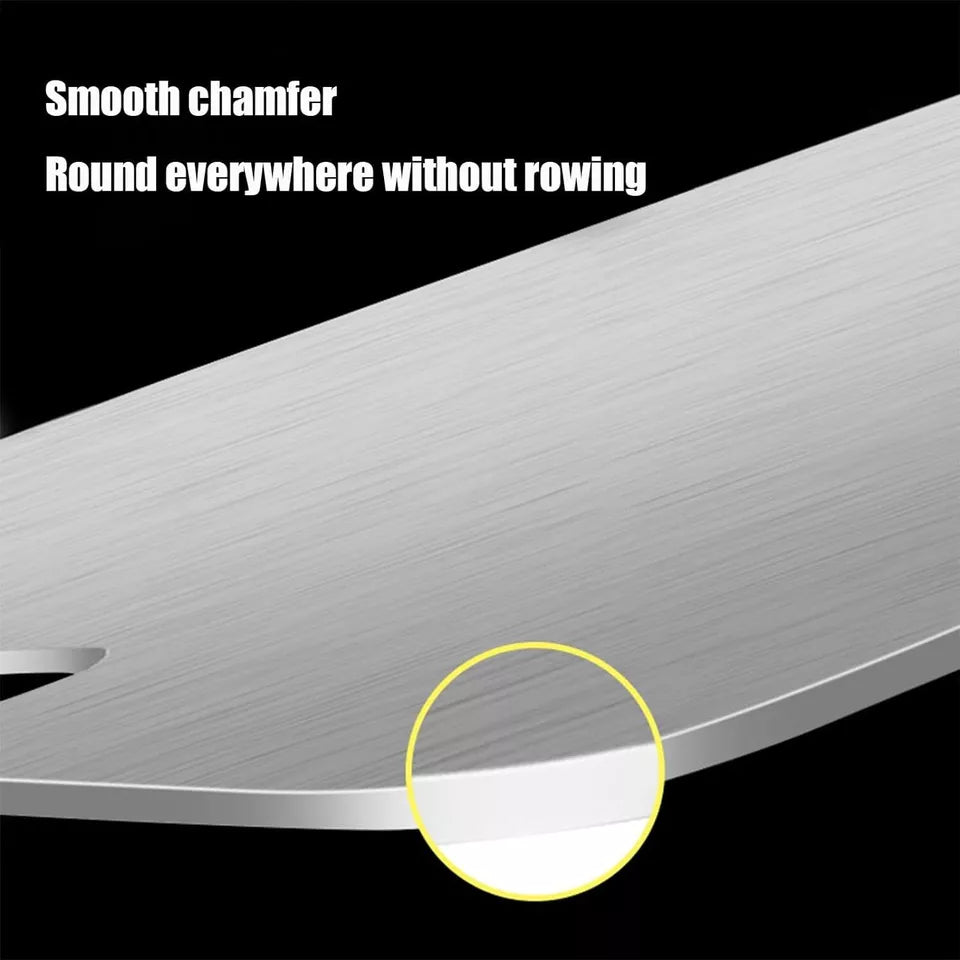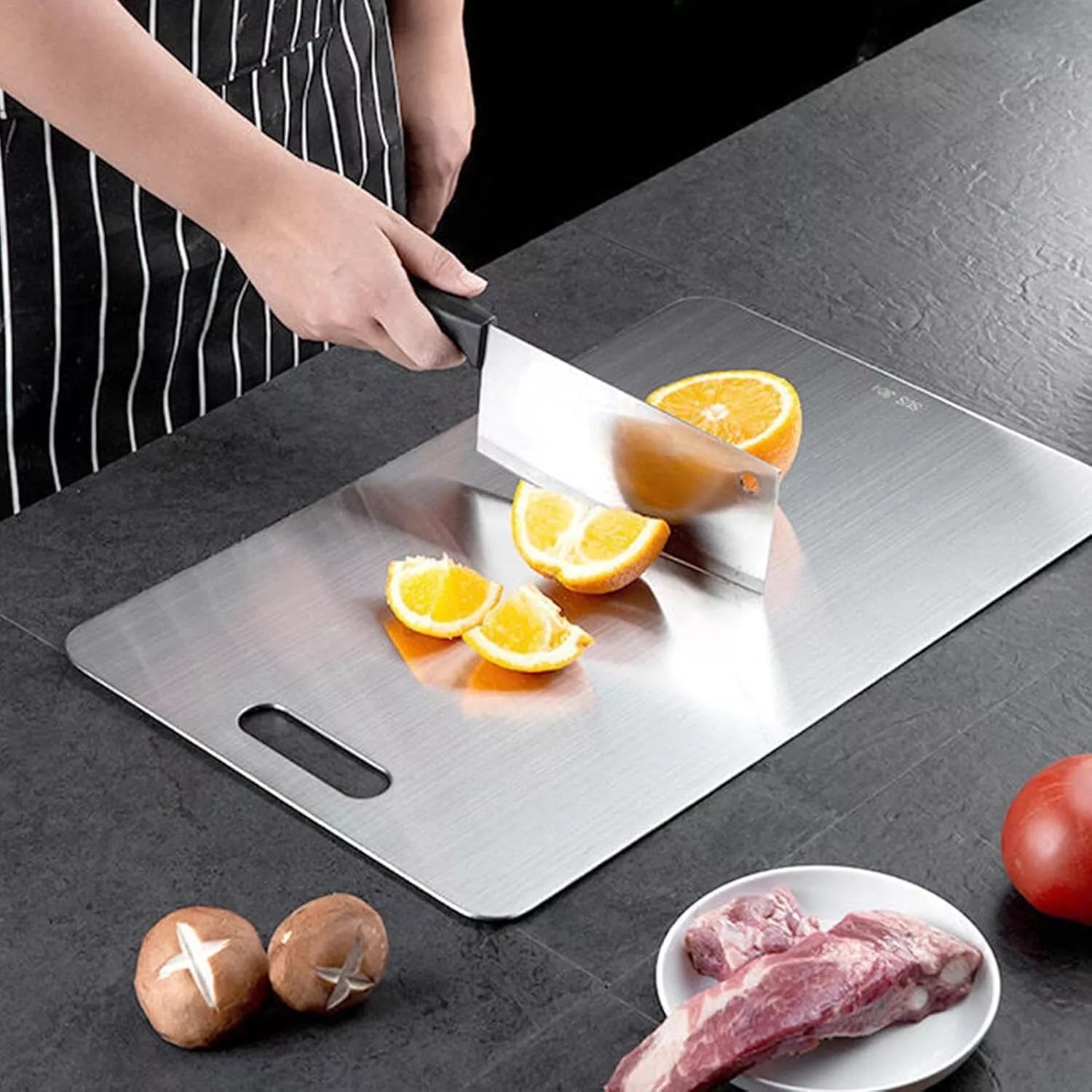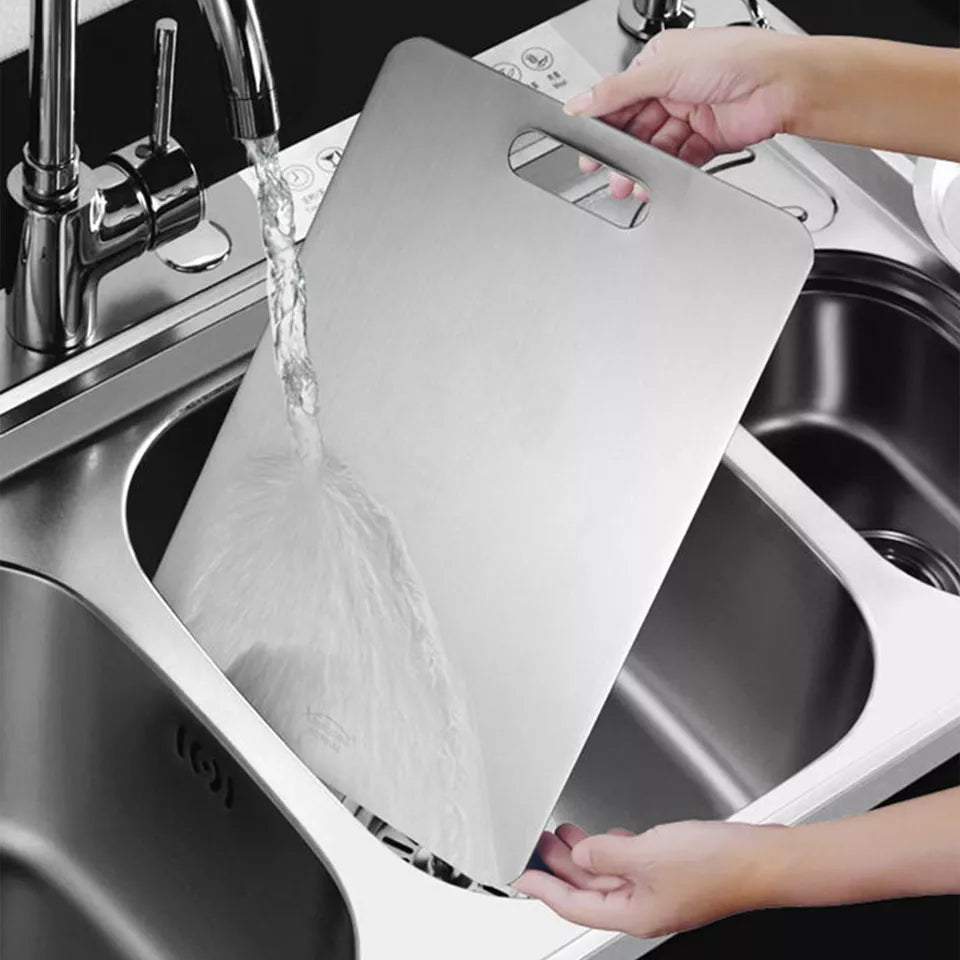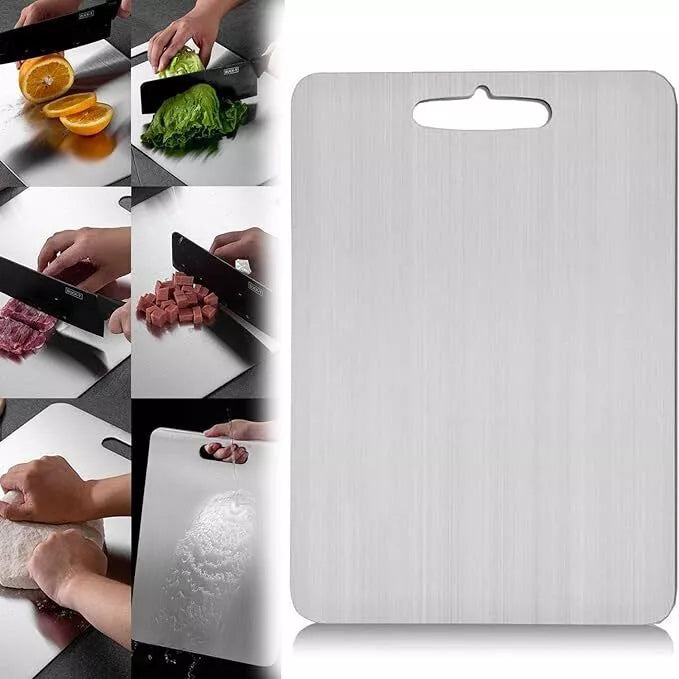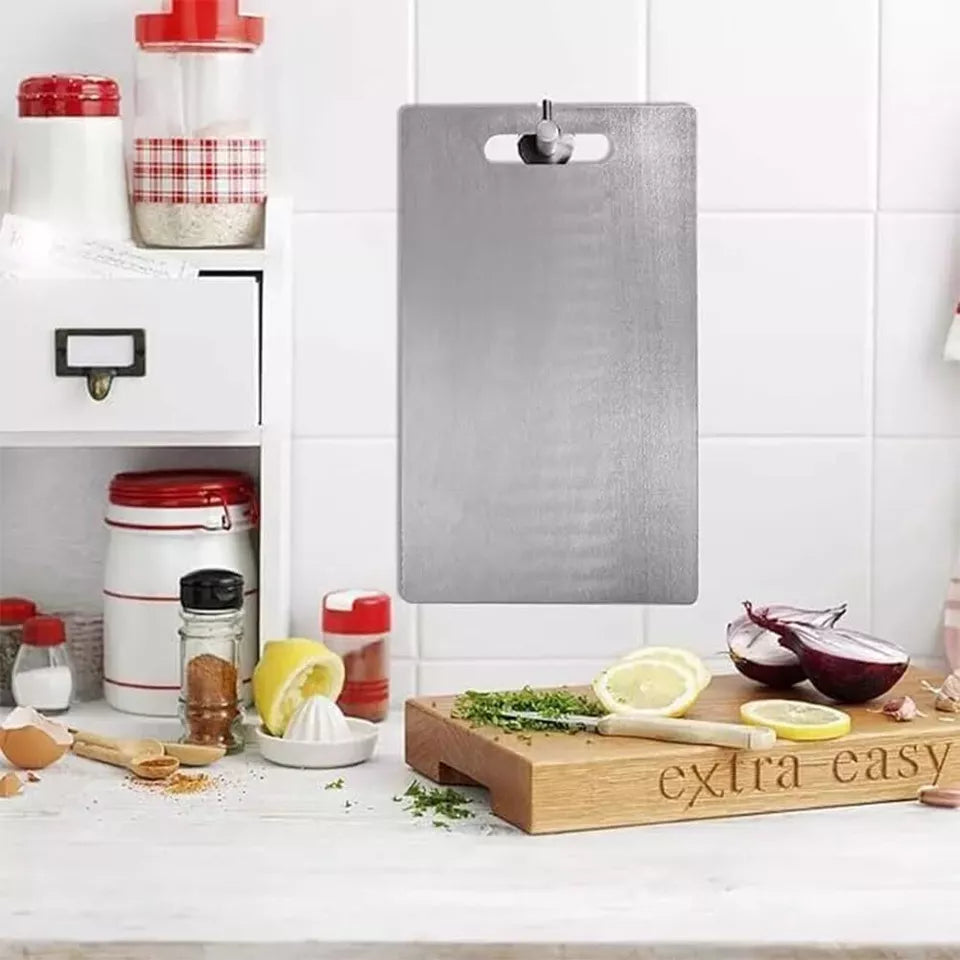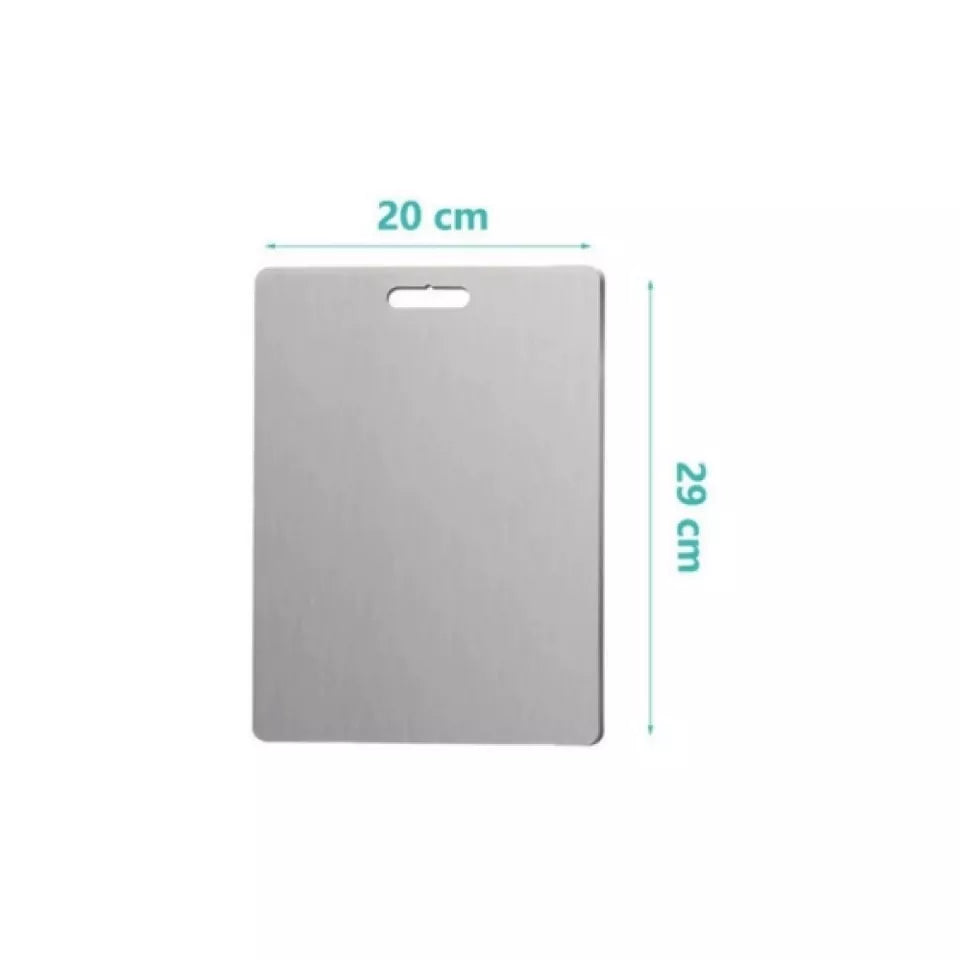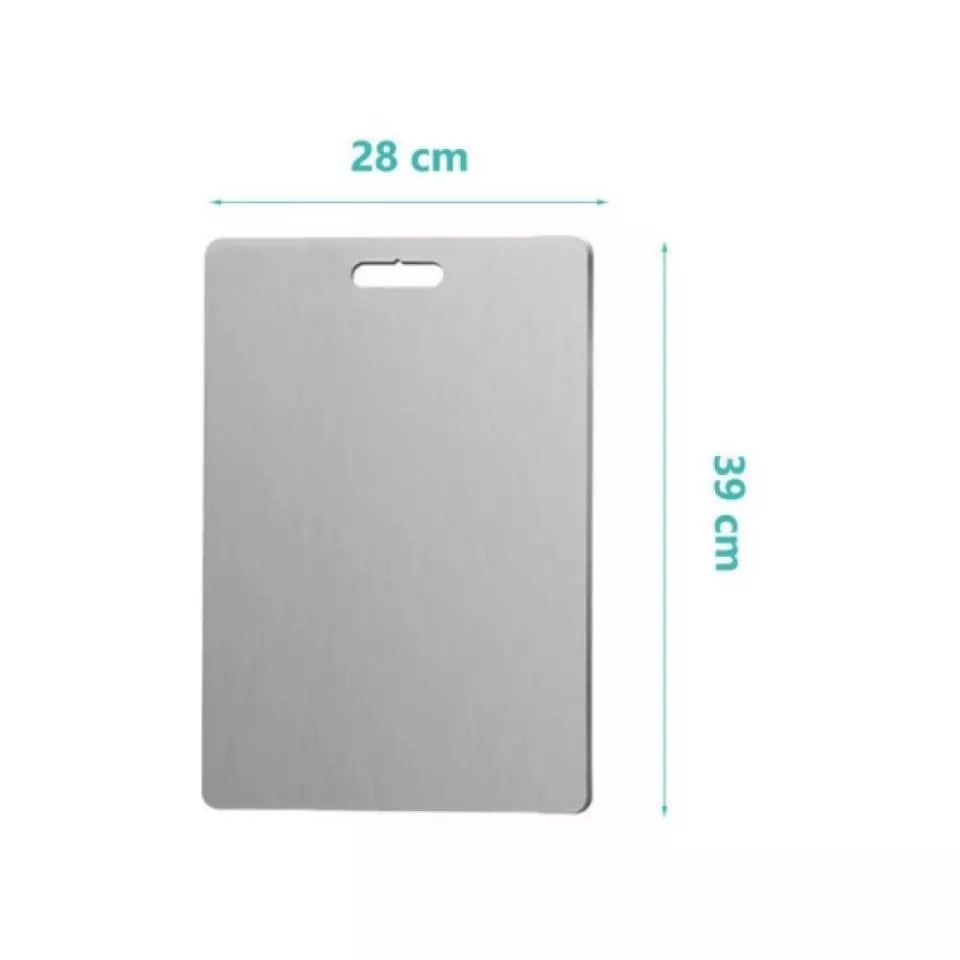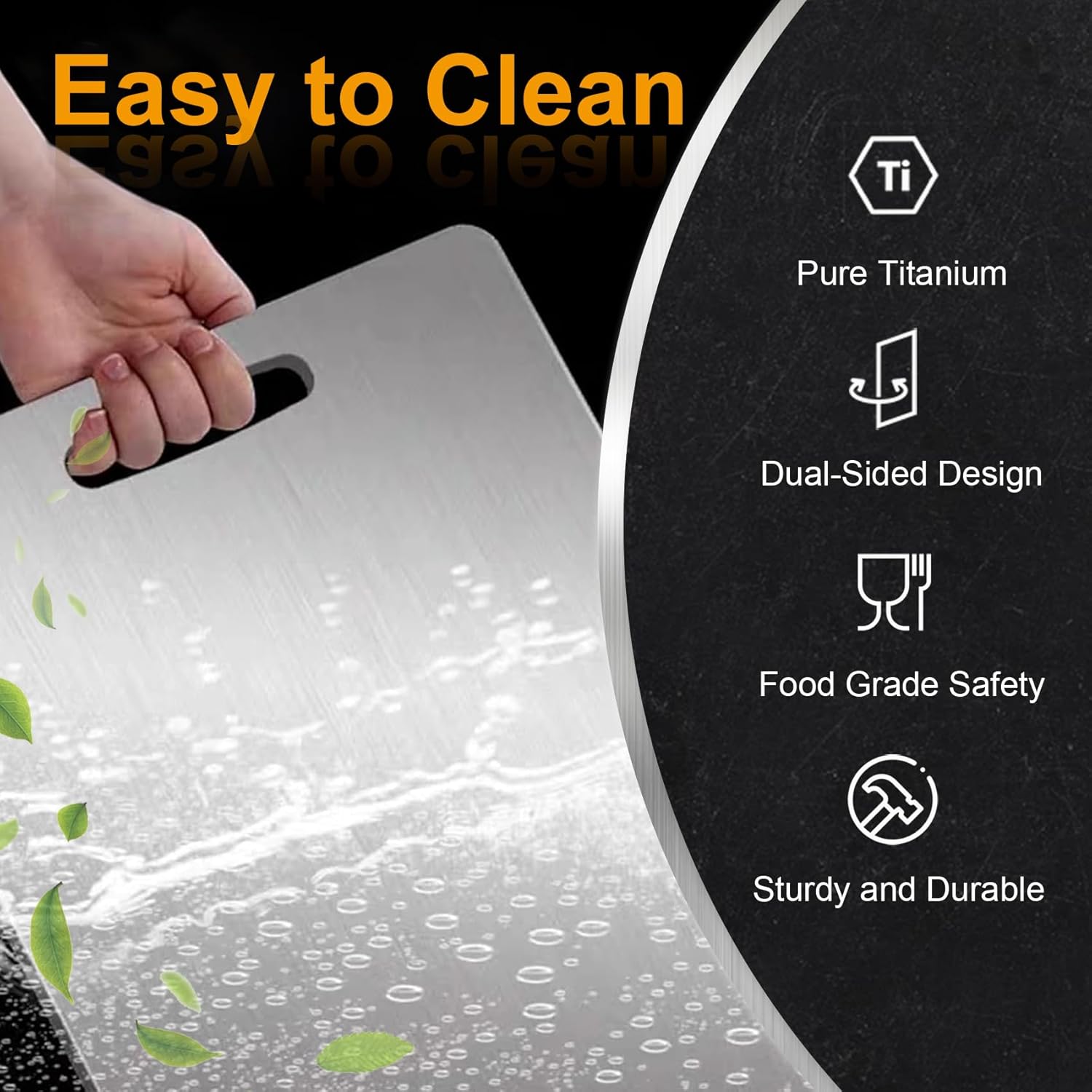The Hidden Dangers of Plastic Cutting Boards: Why Australian Families Are Making the Switch
Are plastic cutting boards safe for Australian families in 2025? No. Research shows plastic cutting boards release microplastics, harbor bacteria in deep grooves, and can leach chemicals into food—especially in Australia’s hot climate. Health-conscious families are switching to safer alternatives like titanium, hardwood, and bamboo boards for hygiene, durability, and long-term value.
Walk into any Australian kitchen, and you'll likely find at least one plastic cutting board. They're cheap, colorful, and seem practical. But what if we told you that your trusty plastic cutting board might be putting your family's health at risk?
Recent research has uncovered alarming truths about plastic cutting boards that every Australian family should know. From microplastic contamination to bacterial harboring, the dangers are more serious than most people realize.
In this comprehensive guide, we'll explore the hidden risks of plastic cutting boards and reveal why health-conscious Australian families are switching to safer alternatives.
The Plastic Cutting Board Problem: More Serious Than You Think
What Seems Convenient Is Actually Concerning
Plastic cutting boards became popular because they appeared to solve the problems of wooden boards:
•They don't require oiling or maintenance
•They're inexpensive to replace
•They come in multiple colors for food separation
But decades of use have revealed serious downsides that manufacturers don't advertise.
Danger #1: Microplastic Contamination in Your Food
The Invisible Threat on Your Plate
Every time you cut on a plastic board, microscopic plastic particles are released into your food. This isn't speculation – it's been scientifically documented.
The Research: A 2023 study published in Environmental Science & Technology found that a single plastic cutting board can release up to 50,000 microplastic particles per square centimeter during normal use. That's potentially millions of plastic particles contaminating your food with every meal preparation.
What Are Microplastics? Microplastics are tiny plastic fragments smaller than 5mm. They're so small they're invisible to the naked eye, but they're accumulating in our bodies at alarming rates.
Health Implications: While research is ongoing, early studies suggest microplastics may:
•Disrupt hormone function
•Accumulate in organs over time
•Potentially contribute to various health issues
The Australian Context: With Australia's growing focus on clean eating and natural health, microplastic contamination represents a significant concern for health-conscious families.
How Microplastics Enter Your Food
Knife Action: Every cut creates microscopic plastic shavings that mix with your food. The sharper your knife, the more particles are released.
Heat Exposure: Washing plastic boards in hot water or dishwashers accelerates particle release. The heat softens the plastic, making it more prone to shedding.
Age and Wear: Older plastic boards with visible knife marks release significantly more particles than new boards.
Danger #2: Bacterial Harboring in Deep Grooves
The Hygiene Myth Exposed
Plastic cutting boards were marketed as more hygienic than wood, but research has proven the opposite.
The Science: A landmark study by Dr. Dean Cliver at UC Davis found that plastic cutting boards actually harbor more bacteria than wooden boards after developing knife cuts. The deep grooves created by knives become perfect breeding grounds for harmful pathogens.
•Plastic is harder than wood, so knife cuts create deeper grooves
•These grooves are difficult to clean thoroughly
•Bacteria multiply rapidly in the protected environment of deep cuts
•Standard washing doesn't reach bacteria embedded in grooves
Dangerous Bacteria Found: Research has identified these harmful pathogens in used plastic cutting boards:
•E. coli: Can cause severe food poisoning
•Salmonella: Leads to gastroenteritis and serious complications
•Listeria: Particularly dangerous for pregnant women and elderly
•Campylobacter: A leading cause of foodborne illness in Australia
The Cross-Contamination Risk
Color-Coding Failure: Many Australian households use different colored plastic boards for different foods (red for meat, green for vegetables, etc.). However, if any board is compromised by deep grooves, the color-coding system becomes ineffective.
Invisible Contamination: Unlike visible mold on wooden boards, bacterial contamination in plastic grooves is invisible, creating a false sense of security.
Danger #3: Chemical Leaching and Toxic Additives
What's Really in Your Plastic Board?
Plastic cutting boards aren't just made of "plastic" – they contain various chemicals and additives that can leach into food.
•BPA (Bisphenol A): Hormone disruptor linked to various health issues
•Phthalates: Plasticizers that may affect reproductive health
•Formaldehyde: Used in some plastic manufacturing processes
•Heavy metals: Sometimes present in colored plastics
•Heat exposure (hot foods, dishwasher washing)
•Acidic foods (tomatoes, citrus, vinegar-based marinades)
•Prolonged contact with fatty foods
•UV exposure (sunlight in outdoor kitchens)
The Australian Climate Factor: Australia's intense UV radiation and high temperatures can accelerate chemical leaching from plastic cutting boards, especially in outdoor cooking areas.
Danger #4: Environmental and Disposal Concerns
The Waste Problem
Short Lifespan: Most plastic cutting boards need replacement every 1-2 years with regular use. This creates ongoing waste and expense.
Non-Biodegradable: Plastic cutting boards don't break down naturally, contributing to Australia's growing plastic waste problem.
Recycling Challenges: Most plastic cutting boards can't be recycled through standard programs due to their composition and contamination from food use.
Ocean Impact: Improperly disposed plastic cutting boards contribute to ocean pollution, a significant concern for Australia's marine ecosystems.
Danger #5: False Economy and Hidden Costs
The True Cost of "Cheap" Cutting Boards
•Average plastic board lifespan: 12-24 months
•Cost per replacement: $15-40 AUD
•10-year cost: $75-200 AUD (multiple replacements)
•Potential medical expenses from foodborne illness
•Long-term health impacts from microplastic exposure
•Increased food waste from contamination concerns
Knife Damage: Hard plastic surfaces can dull knives faster than quality alternatives, increasing sharpening costs.
The Research That Changed Everything
Landmark Studies on Cutting Board Safety
UC Davis Study (Dr. Dean Cliver): This groundbreaking research compared bacterial survival on different cutting board materials. Key findings:
•New plastic boards performed well initially
•After developing knife cuts, plastic boards harbored significantly more bacteria than wood
•Wooden boards showed natural antibacterial properties
Environmental Science & Technology (2023): This recent study quantified microplastic release from cutting boards:
•Plastic boards released 50,000+ particles per cm² during use
•Particle release increased with board age and knife sharpness
•Hot water washing accelerated particle release
Journal of Food Protection Studies: Multiple studies have confirmed that bacteria in plastic cutting board grooves survive standard washing and sanitizing procedures.
What Australian Health Experts Are Saying
Dr. Sarah Mitchell, Food Safety Specialist, University of Sydney: "The microplastic issue is particularly concerning because we're only beginning to understand the long-term health implications. What we do know suggests we should minimize exposure wherever possible."
Professor James Chen, Environmental Health, Griffith University: "The combination of bacterial harboring and chemical leaching makes heavily used plastic cutting boards a significant food safety concern, especially in Australia's hot climate."
Dr. Emma Thompson, Nutritionist and Author: "I always recommend my clients switch from plastic cutting boards. The potential health risks simply aren't worth the convenience factor."
Safer Alternatives: What Australian Families Are Choosing
1. Titanium Cutting Boards: The Premium Solution
•Naturally antibacterial surface
•Chemical-free and non-toxic
Investment Perspective: While more expensive initially, titanium boards eliminate ongoing replacement costs and health risks.
2. Quality Hardwood Boards: The Traditional Choice
•Natural antibacterial properties
•Biodegradable and sustainable
•Repairable and renewable
•Requires regular maintenance
•Can harbor bacteria if not properly cared for
•Needs replacement every 3-5 years
3. Bamboo Boards: The Eco-Friendly Option
•Rapidly renewable resource
•May split or crack over time
•Requires proper maintenance
Making the Switch: A Step-by-Step Guide
Assessing Your Current Boards
•Deep knife grooves or cuts
•Staining that won't wash out
•Persistent odors after cleaning
•Visible wear or scratching
•Age over 2 years with regular use
Transition Strategy
Phase 1: Immediate Safety
•Retire heavily grooved plastic boards immediately
•Use only smooth, newer plastic boards temporarily
•Increase sanitizing frequency
Phase 2: Gradual Replacement
•Replace the most-used board first
•Choose based on your cooking style and budget
•Consider different sizes for different tasks
Phase 3: Complete Upgrade
•Replace all plastic boards within 6 months
•Implement proper care routines for new boards
•Educate family members on proper use
Proper Cutting Board Hygiene (Regardless of Material)
Daily Cleaning Protocol
1.Rinse immediately after use
2.Wash with hot, soapy water
3.Sanitize with appropriate method
4.Dry thoroughly before storage
5.Store in well-ventilated area
Weekly Deep Cleaning
•White vinegar solution (1:1 with water)
•Food-safe sanitizing spray
•Hot water rinse (for heat-resistant materials)
Monthly Assessment
•New knife marks or damage
•Persistent stains or odors
•Signs of wear or deterioration
The Australian Advantage: Leading the Change
Growing Awareness
Australian consumers are increasingly health-conscious and environmentally aware, driving demand for safer kitchen tools.
Local Innovation
Several Australian companies are developing innovative cutting board solutions that address safety and sustainability concerns.
Regulatory Environment
Australia's strict food safety standards are beginning to address cutting board safety, with new guidelines expected in coming years.
Cost-Benefit Analysis: Is the Switch Worth It?
Health Benefits (Priceless)
•Reduced microplastic exposure
•Lower risk of foodborne illness
•Elimination of chemical leaching
•Peace of mind for family safety
Financial Benefits
•Reduced replacement costs (with durable alternatives)
•Lower medical expenses from foodborne illness
•Better knife preservation
•Increased food safety confidence
Environmental Benefits
•Lower carbon footprint (with durable options)
•Support for sustainable materials
•Contribution to ocean health
The Bottom Line: Your Family's Health Is Worth the Investment
The evidence is clear: plastic cutting boards pose significant health risks that increase over time. From microplastic contamination to bacterial harboring, these seemingly innocent kitchen tools can compromise your family's wellbeing.
The Choice Is Yours
You can continue using plastic cutting boards and accept the risks, or you can make a change that protects your family's health for years to come.
Taking Action
The switch doesn't have to happen overnight, but it should happen. Start by replacing your most-used plastic board with a safer alternative, then gradually upgrade the rest of your kitchen.
Investment in Health
Remember, the cost of safer cutting boards is minimal compared to the potential health costs of continued microplastic exposure and foodborne illness.
Ready to Protect Your Family?
Don't let another meal preparation session expose your family to unnecessary health risks. The dangers of plastic cutting boards are real, documented, and avoidable.
Explore our collection of safe, durable cutting board alternatives and take the first step toward a healthier kitchen today.
Use code BLOG20 to save 20% today on our premium hygienic chopping boards, with free shipping Australia-wide. [Shop Hygienic Chopping Boards ➜]
FAQs About Plastic Cutting Boards in Australia
Q1: Why are plastic cutting boards unsafe?
A: They release microplastics into food, harbor harmful bacteria in grooves, and can leach chemicals when exposed to heat or acidic foods.
Q2: Do plastic cutting boards release microplastics?
A: Yes. Studies show a single board can release up to 50,000 microplastic particles per cm² during normal use.
Q3: Are plastic cutting boards more hygienic than wood?
A: No. Research shows plastic boards trap more bacteria in knife cuts, while wood has natural antibacterial properties.
Q4: What chemicals can leach from plastic cutting boards?
A: BPA, phthalates, and other additives may leach when exposed to heat, acidic foods, or UV light—common in Australian kitchens.
Q5: How often should plastic cutting boards be replaced?
A: Every 1–2 years, but many Australians are switching to long-lasting alternatives to avoid ongoing health and waste concerns.
Q6: What are safer alternatives to plastic boards?
A: Titanium (antibacterial, durable, knife-friendly), hardwood (traditional, renewable), and bamboo (eco-friendly and antimicrobial).
For further information please refer to:
Are Titanium Cutting Boards Good? An Expert Analysis
What Are the Most Hygienic Chopping Boards? Top Picks for a Clean Kitchen

